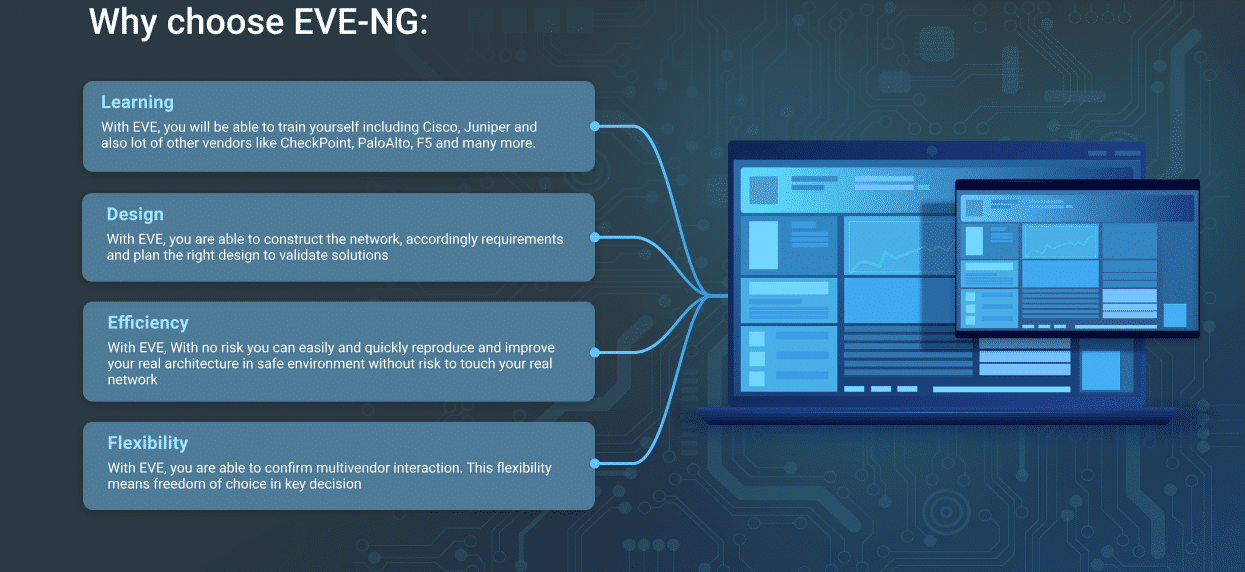


Test EVE-NG with a simple network emulation scenarioĮVE-NG is a clientless network emulator that provides a user interface via a browser.Add to the EVE-NG VM the images you will use to emulate network nodes.Modify the EVE-NG VM’s network interfaces configuration file and restart the VM.Start the EVE-NG VM for the first time and run through the automatic setup script.Modify the permissions of the VMware virtual interfaces on the Linux host computer.Set up Telnet, VNC, and Wireshark to work with EVE-NG.The steps requires to set up the EVE-NG (or UNetLab) virtual machine on a Linux host computer are: The procedure is the same for UNetLab.įor users of other operating systems, the EVE-NG development team provides good information on setting it up on Windows ( Setup, Integration) or Mac OS ( Setup, Intergration). I’ll also show the basic steps to creating and running a simple lab consisting of emulated Linux nodes. In this post, I focus only on the specific issues related to getting EVE-NG working on a Linux system. When using the EVE-NG virtual machine on a Linux computer, I had to resolve a few problems related to the way VMware Player works in Linux. Since it runs in a virtual machine, EVE-NG may be set up on any operating system such as Windows, Linux, or Mac OS. Its graphical user interface runs in a web browser. The UNetLab/EVE-NG network emulator runs in a virtual machine so it can be set up Windows, Mac OS, or Linux computers. UNetLab is the current, stable version of the network emulator and EVE-NG is an updated version of the same tool, available as an alpha release. For more information, see interfaces(5).EVE-NG and UNetLab are graphical network emulators that support both commercial and open-source router images.

# This file describes the network interfaces available on your system SSH into your EVE-NG server > log on as the root user, and make sure it can see BOTH network cards, with the following command As the good folk at EVE-NG have configured all the hard stuff for you! Note: You can probably skip down to allowing promiscuous mode below. VMXNet3 is fine, just make sure it’s connected to the correct port-group. Unlike UNL, EVE-NG will deploy with only one vNIC, (below I’m using vSphere 6), so to keep things nice and simple I’m just going to add one more I’m assuming you already have EVE-NG installed and some images in it, and know how to create a lab, and that you want to connect that lab to the internet. In all honesty a lot of this article you can skip, I’m just showing you what’s going on down at the Linux level (so you can be sure yours will be OK). I really like EVE-NG, for proof of concept work, testing, and just learning new products I cant think of any product better.īut what if you want to connect your labs to the outside world? Solution I did an article a while back on doing this with UNL, so I thought I’d revisit it today for EVE-NG.


 0 kommentar(er)
0 kommentar(er)
